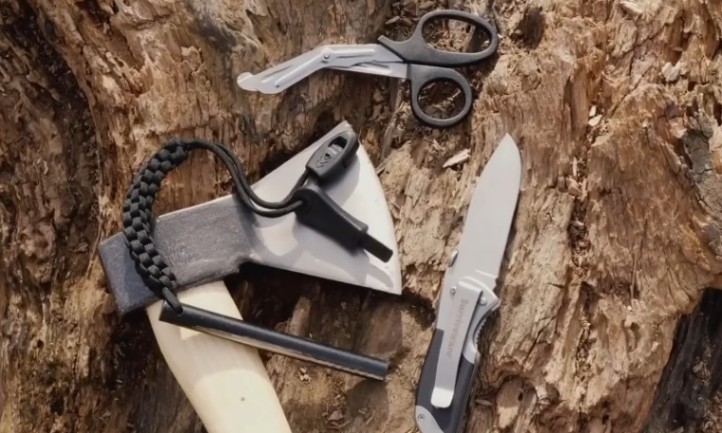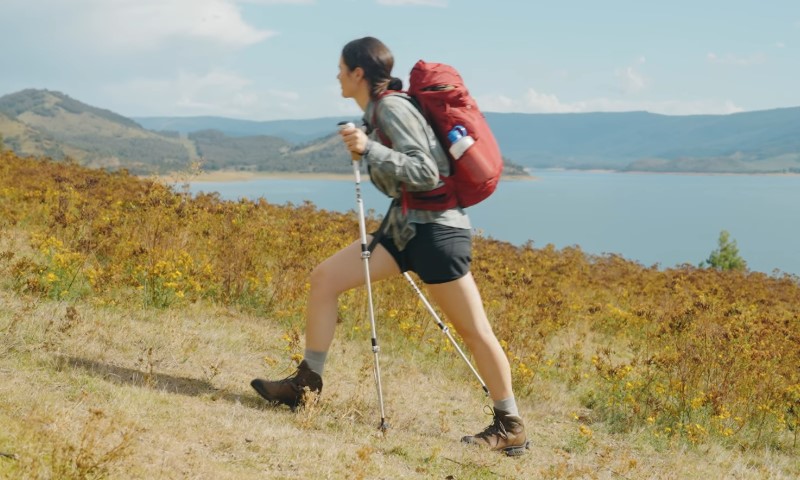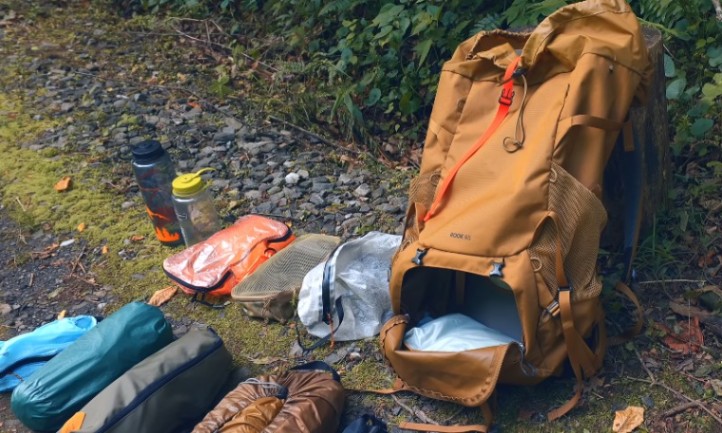There’s something timeless about hitting the trail. The rhythm of your boots on the ground, the smell of pine and soil, and that sudden quiet when you realize you’re far from the nearest signal tower.
It doesn’t matter if you’re trekking a local trail for the afternoon or planning a week in the backcountry, what you pack determines how enjoyable and safe your trip will be.
Packing for a hike is about balance, foresight, and smart preparation. Here’s a comprehensive guide to the travel essentials every hiker should pack before setting out.
The Foundation

A good hike begins with the right backpack. It’s the framework that supports your trip.
The wrong one leads to sore shoulders and frustration, while the right one makes the load feel lighter and more organized.
Many hikers also match their gear with reliable tan army boots that offer solid ankle support and traction for uneven terrain.
Choosing the Right Backpack
When selecting a hiking backpack, look at capacity, comfort, and structure.
| Type of Hike | Recommended Capacity | Example Use |
| Half-day to full-day hike | 15–30 liters | Water, snacks, jacket, first-aid kit |
| Overnight trip | 30–50 liters | Food, cooking gear, tent, sleeping bag |
| Multi-day trek | 50+ liters | Extended supplies, clothing layers, camp setup |
Key features to look for:
- Adjustable hip and shoulder straps for even weight distribution
- Ventilated back panel to prevent sweat build-up
- Hydration sleeve for water bladders
- Weather-resistant materials to handle sudden rain
If you plan to hike frequently, invest in a pack that molds to your frame. Try it on with some weight before buying – it should feel snug, not tight.
Hydration

Even experienced hikers underestimate how fast dehydration can creep up. Losing as little as 2% of body water affects endurance and concentration.
Essential Hydration Gear
- Water bladder (2–3 liters): Fits inside most modern backpacks and makes sipping on the go easy.
- Reusable water bottle: Keep one in an exterior pocket for quick refills.
- Portable water filter or purification tablets: Crucial for long trips where streams or lakes are your main sources.
Hydration Strategy
Drink small amounts often rather than large gulps infrequently. On warm days, you may need half a liter per hour of active hiking. Always start your hike hydrated, not catching up along the way.
Fuel
You’re burning hundreds, sometimes thousands, of calories on the trail. Food is not only energy – it’s morale. Nothing beats a snack after a steep climb.
Quick Energy Foods
- Trail mix with nuts, seeds, and dried fruit
- Granola or protein bars
- Jerky (beef, turkey, or plant-based alternatives)
- Peanut butter or nut butter packets
For Longer Treks
If your hike involves overnight stays or long distances:
- Dehydrated meals: lightweight and just need hot water
- Instant oats for breakfast
- Electrolyte packets for water
- A compact stove (like Jetboil or MSR PocketRocket) and a small fuel canister
Bring a light titanium spork and a collapsible bowl to keep things compact. Always pack one extra meal more than you think you’ll need – you never know when weather or trail conditions might delay your return.
Clothing

Weather can change fast, especially in the mountains. Smart hikers layer their clothing to adjust quickly without stopping for long.
The Three-Layer System
- Base layer: Moisture-wicking materials like merino wool or synthetic blends. Avoid cotton – it traps sweat.
- Insulating layer: Fleece or down jacket to retain body heat.
- Outer shell: Waterproof and windproof jacket that shields against rain and cold wind.
Footwear
Your shoes define your hike. For day hikes, trail running shoes might be enough, but rougher terrain calls for mid or high-ankle hiking boots.
Look for:
- Grippy outsoles (Vibram soles are reliable)
- Waterproof membranes like Gore-Tex
- Proper arch support
Break in new boots at least a week before the hike to prevent blisters.
Bonus Items
- Lightweight gloves and hat for high altitudes
- Gaiters to keep dirt and snow out of your boots
- Extra socks (always pack at least one dry pair)
Navigation
Modern tech helps, but traditional tools still matter. Batteries die, signals drop, and the wilderness doesn’t always play fair.
What to Bring
- Topographic map and compass (and the ability to use them)
- GPS device or smartphone with offline maps
- Trail guide or printed route description
- Power bank or solar charger
Download offline maps before leaving home. If you’re using your phone for GPS, keep it in airplane mode to conserve battery.
Shelter and Sleep
Even if you’re only planning a day hike, unexpected weather or injury could force an overnight stay. Always be ready for that possibility.
For Multi-Day Hikes
- Lightweight tent or bivy sack
- Sleeping bag rated for the expected temperature
- Sleeping pad for insulation from the ground
- Compact pillow or stuff sack filled with clothes
If weight is a concern, consider modern ultralight options made with Dyneema or silnylon fabrics. Always check the total pack weight before heading out – ideally under 20% of your body weight.
First Aid
Accidents happen even on easy trails. A properly stocked first-aid kit can prevent a small scrape from turning into a trip-ending infection.
Basic First-Aid Kit Checklist
| Category | Items to Include |
| Wound care | Bandages, gauze, antiseptic wipes, adhesive tape |
| Pain relief | Ibuprofen or acetaminophen |
| Blister care | Moleskin, hydrocolloid bandages |
| Medical tools | Tweezers, small scissors, safety pins |
| Allergy & stomach relief | Antihistamines, anti-diarrheal tablets |
| Personal meds | Any prescribed medications, labeled clearly |
Keep your kit in a waterproof pouch and check expiration dates regularly. Refill used items after each trip.
Lighting
Even if you plan to return before dark, a reliable light source is essential. Trails look completely different once the sun drops, and finding your way without illumination is risky.
Best Lighting Options
- Headlamp: Keeps hands free and directs light where you’re looking.
- Backup flashlight: Small, durable, and battery-efficient.
- Extra batteries: Always bring a fresh set.
LED headlamps with red-light modes are great for preserving night vision and not disturbing other hikers at camp.
Safety and Emergency Tools

When you’re miles from help, small items can make a massive difference. Safety gear is not paranoia – it’s preparation.
Must-Have Tools
- Multi-tool or Swiss Army knife
- Fire-starting kit: waterproof matches, lighter, and firestarter cubes
- Whistle: for signaling in emergencies
- Reflective tape or emergency blanket: helps with visibility and warmth
- Paracord (10–15 feet): useful for repairs, hanging food, or setting up shelter
A small mirror or signal device can also be life-saving in case of a helicopter search.
Hygiene and Personal Care
Staying clean in the wilderness isn’t about vanity – it’s about health and comfort. Simple hygiene prevents rashes, infections, and unnecessary misery.
Hygiene Essentials
- Biodegradable soap and wipes
- Toothbrush and toothpaste tablets
- Quick-dry towel
- Toilet paper or tissue and a small trowel
- Hand sanitizer
Sun and Weather Protection
Sunburn at high elevation hits harder than at sea level. The thinner air provides less UV filtration, meaning you burn faster even when it’s cool.
Must-Have Items
- Sunscreen (SPF 30 or higher)
- Lip balm with SPF
- Sunglasses with UV protection
- Lightweight hat with brim or neck cover
In rainy regions, pack a compact rain poncho or a pack cover to keep your gear dry. Nothing ruins morale faster than a soaked sleeping bag.
Comfort and Extras

Sometimes it’s the smallest gear that changes the whole mood of a trip. A compact chair, for instance, feels luxurious after hours of hiking.
Optional But Worth Packing
- Trekking poles: reduce joint strain on steep climbs and descents
- Compact camping chair or sit pad
- Notebook and pen for journaling or sketching
- Camera or action cam for documenting your route
- Lightweight hammock for rest stops
Packing Strategy
How you pack matters almost as much as what you pack. Poorly distributed weight leads to strain, fatigue, and imbalance on tricky trails.
The Golden Rule of Packing
Pack heavier items closer to your back and centered around your midline. Keep lighter gear toward the top and sides.
Suggested Layout:
- Bottom: sleeping bag, pad, or tent body
- Middle (near spine): food, cooking gear, heavy water
- Top: rain jacket, extra layers, first aid kit
- Outer pockets: snacks, water bottle, map, headlamp
Tighten compression straps so nothing shifts while walking. Keep emergency gear accessible – you shouldn’t need to unpack everything just to find your whistle or raincoat.
Leave No Trace
Every hiker has a responsibility to protect the places they explore. Good gear helps you do that.
Core Principles
- Carry out what you carry in
- Camp at least 200 feet from water sources
- Stay on established trails to prevent erosion
- Minimize campfire impact (use stoves when possible)
If you use biodegradable soap, do it away from rivers. Wildlife doesn’t need our food scraps or chemical residues.
Pre-Hike Checklist
@alex..glasgow 🎒 What should you pack for a day hike? Don’t overthink it,here’s exactly what I take for a short hike! Save this for later 🥾🌿 SPF: @dussl Bag/Jacket: @Arc’teryx Trousers: @Columbia Sportswear Mid Layer: @Rab Equipment Sunglasses: @Oakley #HikingTips #DayHike #OutdoorsForAll #HikingScotland #WhatToPack #TrailReady #NatureTherapy #EasyHikes #EasyMunros #munrobagging
Before locking your front door, do one final check. It’s easy to forget something small that ends up mattering a lot.
| Category | Item Check |
| Essentials | Backpack, water, food, clothing layers |
| Navigation | Map, compass, GPS, power bank |
| Safety | First-aid kit, whistle, headlamp, fire starter |
| Shelter | Tent, sleeping bag, pad |
| Weather gear | Rain jacket, hat, sunscreen |
| Personal items | ID, phone, cash, permit |
Final Thoughts
Packing for a hike is both art and discipline. The goal isn’t to bring everything you might need – it’s to bring everything that will actually make your trip safer, lighter, and more enjoyable. Each hike will teach you something new about what’s truly essential and what just adds weight.
In the end, preparation is what separates a good hike from a risky one. With a well-packed bag, every trail feels a little freer, every climb a bit easier, and every night under the stars that much more rewarding.

